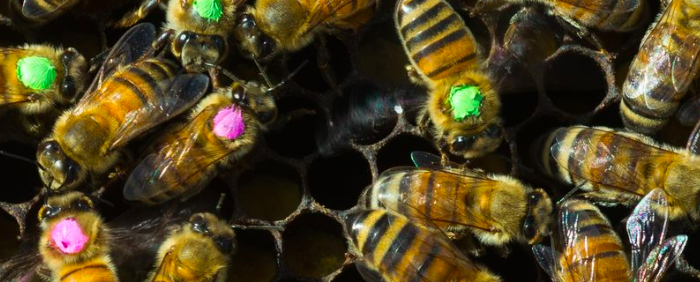
Beekeepers have been confronted for several years with problems of abnormal mortality of bees. They have been led to suspect the action of insecticides widely used in agriculture.
- Behavior in plants
The manufacturer has since argued that Fipronil is not a systemic insecticide. However, various studies have shown that it can be transported by the sap in the plant . Moreover, the United States has approved a variety of Regent (Regent 4SC) to put in corn seedlings to limit the damage caused by the corn borer. As the larvae of corn borer are lodged in the corn stalk it is obvious that the effectiveness of the product can only be explained by a transport in the sap.
- Behavior in the environment
Fipronil exposed to the sun (soil surface or plants) undergoes photo-degradation to desulfinyl-Fipronil which is significantly more toxic than Fipronil itself. In soil and water Fipronil is first degraded into other molecules , many of which are as active as Fipronil . Since it is very difficult to define the moment when a substance has completely disappeared from an environment, it is conventional to consider its half-life , that is to say the duration after which half of the initial quantity has disappeared.. Some results reported short half-lives (less than 1 month). In reality, various studies have shown a much greater persistence with half-lives of 7 months to more than 1 year, depending on the nature of the soil. If we take into account degradation products, which are not harmless, we arrive at values of the order of 16 months . In addition, a product based on Fipronil injectable in the soil to fight against termites is guaranteed to be effective for 5 years!
Fipronil would not tend to migrate and remain in the upper layers of the soil, which would not make a likely candidate for the contamination of groundwater . Fipronil therefore seems capable of contaminating the soil for a long time and plowing could, from one year to the next, bring significant quantities back to the surface.
- Fipronil and bees
What are the mechanisms by which an insecticide used in agriculture can potentially harm bees? There are three a priori.
The first is the massive death of bees, following important exposures.
The second is a behavioral disturbance (eg decrease in foraging activity, disturbance of direction, brood care …). Indeed one must be aware that almost all insecticides are neurotoxic; very low exposure can therefore lead to disturbances of this type.
The third is intoxication of the brood through feeding with honey or pollen containing traces of insecticide. The problem is critical for systemic insecticides that can be found in nectar or pollen: for example various works highlight the presence of Gaucho in these products.
With regard to acute intoxication mortality, it is interesting to compare the toxicity of Fipronil and imidacloprid ( Gaucho active substance ):
DL 50 by ingestion :
- Fipronil 4.2 nanog / bee
- Imidacloprid 3.7 nanog / bee
DL 50 per contact:
- Fipronil 5.9 nanog / bee
- Imidacloprid 81 nanog / bee
It is obvious that much lower doses will be capable of causing behavioral disturbances detrimental to the productivity or even the survival of the hive. We see that Fipronil is much more active by simple contact than imidacloprid, which certainly explains the observations exposed a little further.
good article very hopeful